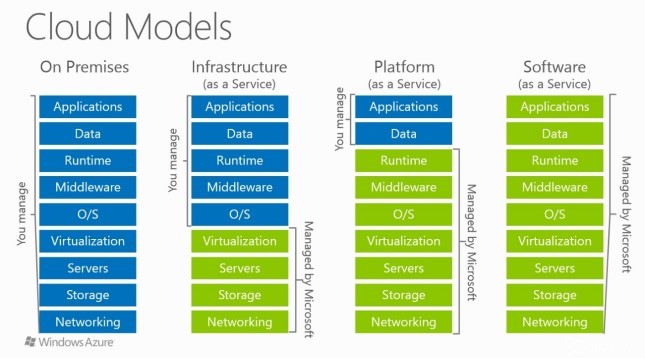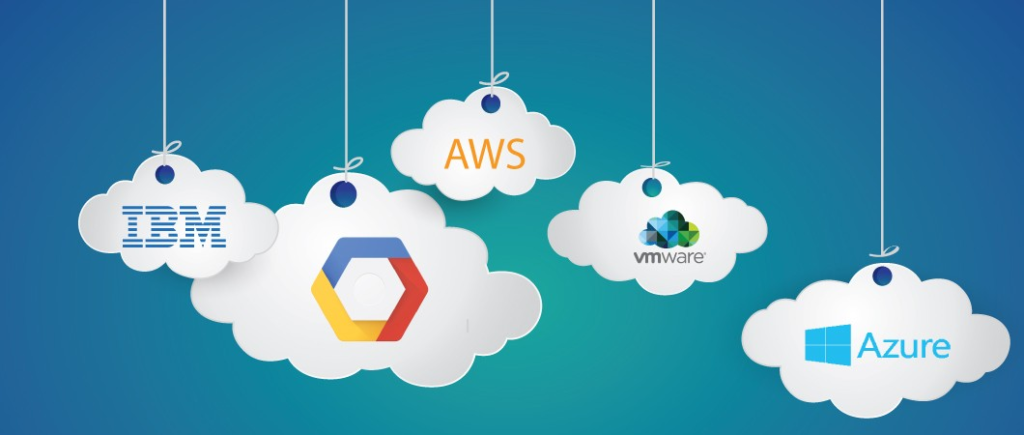
Cloud computing economics and trends
Cloud computing economics
Cloud computing has become a transformational driver in the innovation of IT. This trend is attributed to different criteria including economies of scale, human resources, distributed costs, scalability and geographic locations. These criteria align with the economics provided by Microsoft (2011), whereby intra and inter organizational factors determine the feasibility to adopt cloud computing and determine the appropriate model. Major cloud service providers (CSPs) offer various models to their customers including:
- Public Cloud is a cloud offering maintained for generic public use by a third-party entity (Kaul et al., 2017) such as Amazon, Microsoft, DigitalOcean or Google.
- Virtual Private Cloud is a cloud offering by CSPs, segregating data and processes managed by an IT department within an organization, but running on the CSP’s infrastructure. A private cloud is not limited by network, security, or legal restrictions that may impact a public cloud (Davidovic et al, 2015).
- Infrastructure as a Service (IaaS) is a cloud computing model used with infrastructure such as storage, servers, and central processing through the use of virtual machines (Shin et al., 2014), such as AWS EC2 and Rackspace.
- Platform as a Service (PaaS) is a cloud computing model providing customers with a highly integrated environment including operating system, file storage and network (Daylami, 2015), such as AWS Kubernetes (EKS) and GCP Kubernetes (GKE).
- Software as a Service (SaaS) is a model whereby customers can run an application running on the CSP’s infrastructure (Koo & Kim, 2015), such as SalesForce or WPengine.

All the above models are available on yearly commitments or pay-as-you-go, thus giving clients a greater degree of flexibility in terms of computing and financials, especially for seasonal/occasional scaling of resources.
Comparing traditional and cloud computing models
Traditional computing models relied on in-house or co-located servers providing client/server or distributed computing. This model relied heavily on datacentre, procurement and maintenance of servers, licences of operating systems and applications (Microsoft, 2010). Furthermore, this model relies heavily on internal resources including hardware, network, applications and database engineers/administrators. This model can be transitioned into an on-premise or co-located private cloud. The total cost of ownership (TCO) for such model can vary considerably compared to cloud computing. The study conducted by Fisher (2018) found that costs for on-premise are cheaper then cloud computing and less susceptible to short-term price increases. Conversely, cloud computing has lower initial costs and reduced operational costs.

Current trends in cloud computing
Five major trends around cloud computing are (Ikink, 2021):
- Cloud costs are a major concern for all consumers. As explained above CSPs tend to increase the pricing of their offering, thus increasing the TCO of IT for an organization. This result in higher service to the general public. The CTO needs to ensure that cloud computing assets are adequately governed and monitored to ensure that services are consumed as needed.
- Cloud agnosticism stems partially from cloud costs. The CTO needs to avoid vendor-lock, thus promoting infrastructure as code such as Terraform. This allows the organization to set-up cloud environment on another provider as needed, for example if pricing is better or SLAs are improved. Such agnosticism allows the organization to reduce costs and increase availability of offering to the general public.
- Multicloud is achieved through the notation of cloud agnosticism, whereby it allows the organization to have a service running on different cloud providers. The CTO needs to ensure that any software architecture is built without any architectural dependency on specific CSPs.
- Containerization is a software architecture built without any architectural dependency on specific CSPs. This architecture allows orchestration by CSPs, whilst retaining independence to run on different providers. Furthermore, containerization allows reduction in compute resources, hence reducing costs. The CTO needs to ensure that such architecture is sought for during the design phase of any software development initiative.
- Leveraging artificial intelligence or machine learning on CSPs allow organizations to reduce initial costs and pay only for what they consume. AI or ML initiatives are allowing organizations to build knowledge which allows them to improve their offerings and hence the end product. The CTO needs to be aware of the existing offering and the cost versus gains of such initiatives.
References
Davidovic, V., Ilijevic, D., Luk, V., & Pogarcic, I. (2015). Private cloud computing and delegation of control. Procedia Engineering, 100, 196-205. https://doi.org/10.1016/j.proeng.2015.01.358
Daylami, N. (2015). The origin and construct of cloud computing. International Journal of the Academic Business World, 9(2), 39-45.
Fisher, C. (2018). Cloud versus on-premise computing. American Journal of Industrial and Business Management, 8(09), 1991.
Ikink, R. (2021, June 4). Top cloud trends for 2021 and beyond: Accenture. Retrieved July 5, 2021 from https://www.accenture.com/nl-en/blogs/insights/cloud-trends.
Kaul, S., Sood, K., & Jain, A. (2017). Cloud computing and its emerging need: Advantages and issues. International Journal of Advanced Research in Computer Science, 8(3), 618-624. https://doi.org/10.26483/ijarcs.v8i3.3064
Koo, C. J., & Kim, J. (2015). Decision making for the adoption of cloud computing for sensor data: From the viewpoint of industrial security. International Journal of Distributed Sensor Networks, 11(9), 581563. https://doi.org10.1155/2015/581563
Microsoft. (2010). The economics of the cloud. Microsoft.com. Retrieved July 5, 2021 from https://news.microsoft.com/download/archived/presskits/cloud/docs/The-Economics-of-the-Cloud.pdfhttp://www.microsoft.com/en-us/download/details.aspx?id=5166
Pal, R., & Hui, P. (2013). Economic models for cloud service markets: Pricing and capacity planning. Theoretical Computer Science, 496, 113-124.Shin, J., Jo, M., Lee, J., & Lee, D. (2014). Strategic management of cloud computing services: focusing on consumer adoption behavior. IEEE Transactions on Engineering Management, 61(3), 419-427. https://doi.org10.1109/TEM.2013.2295829